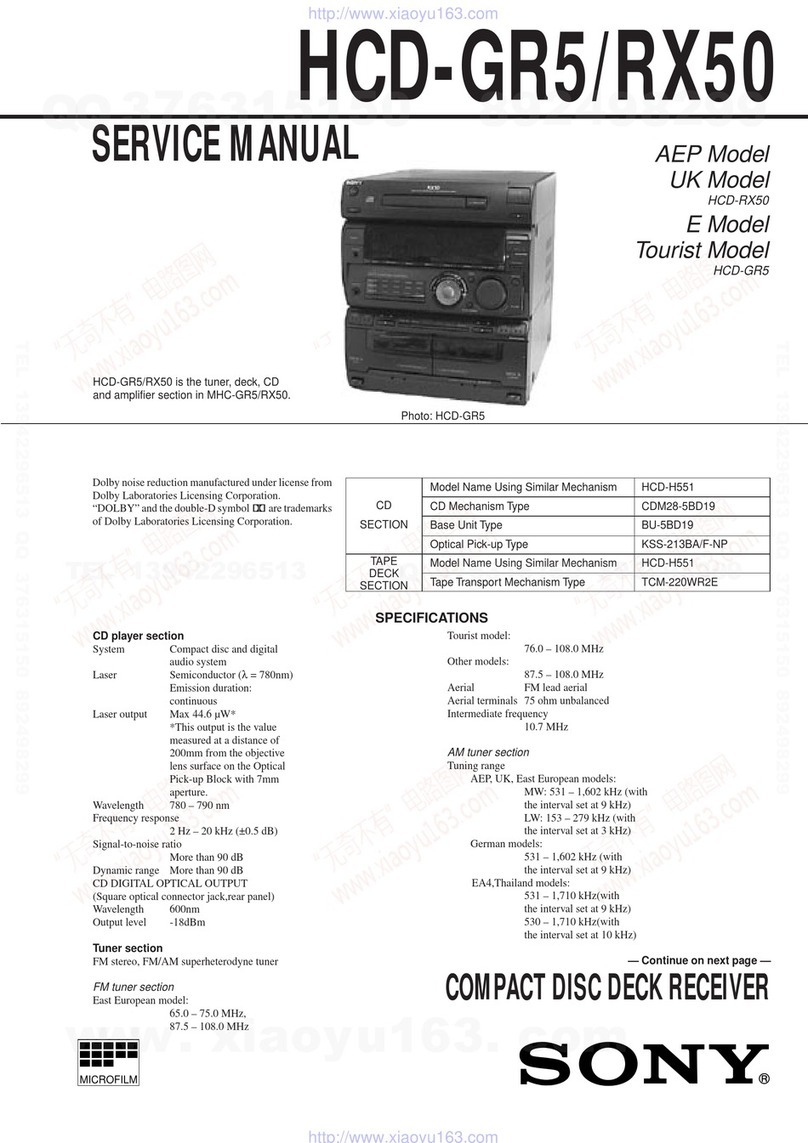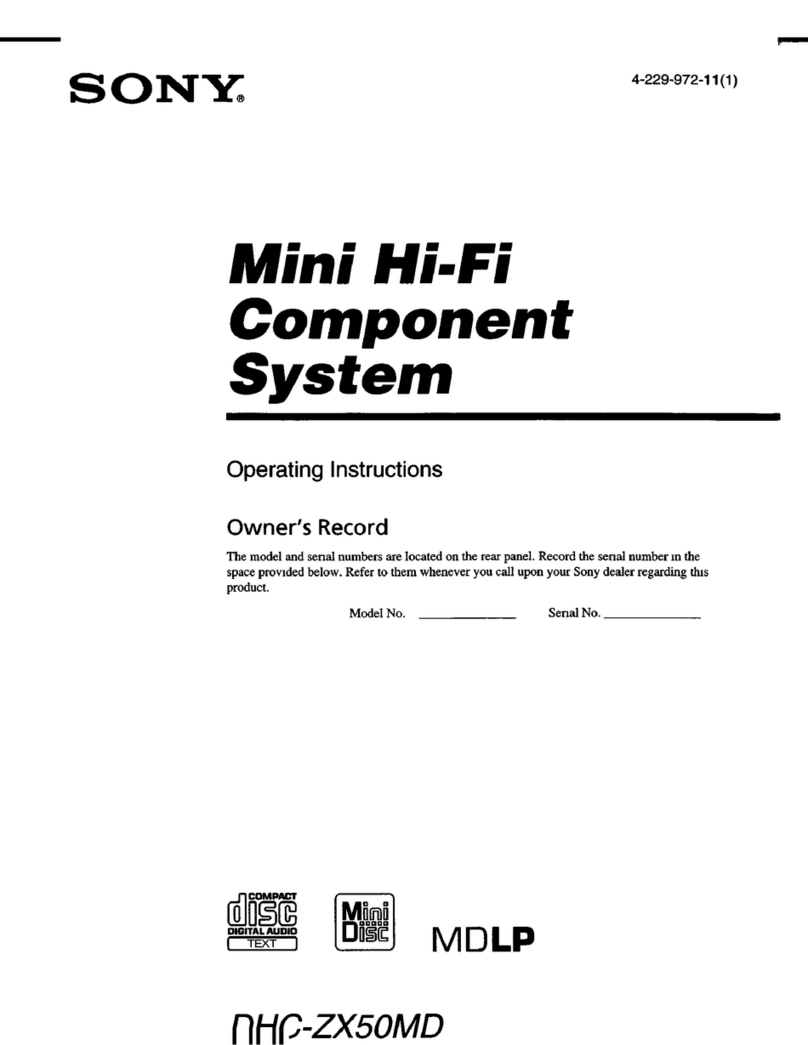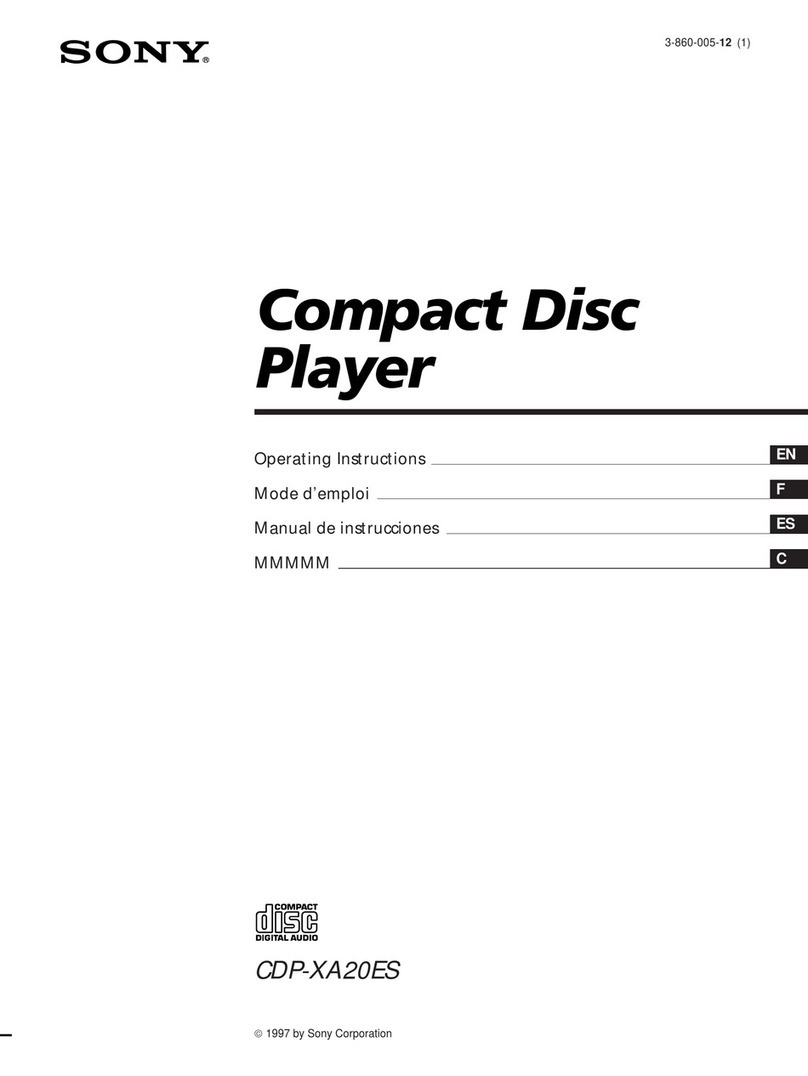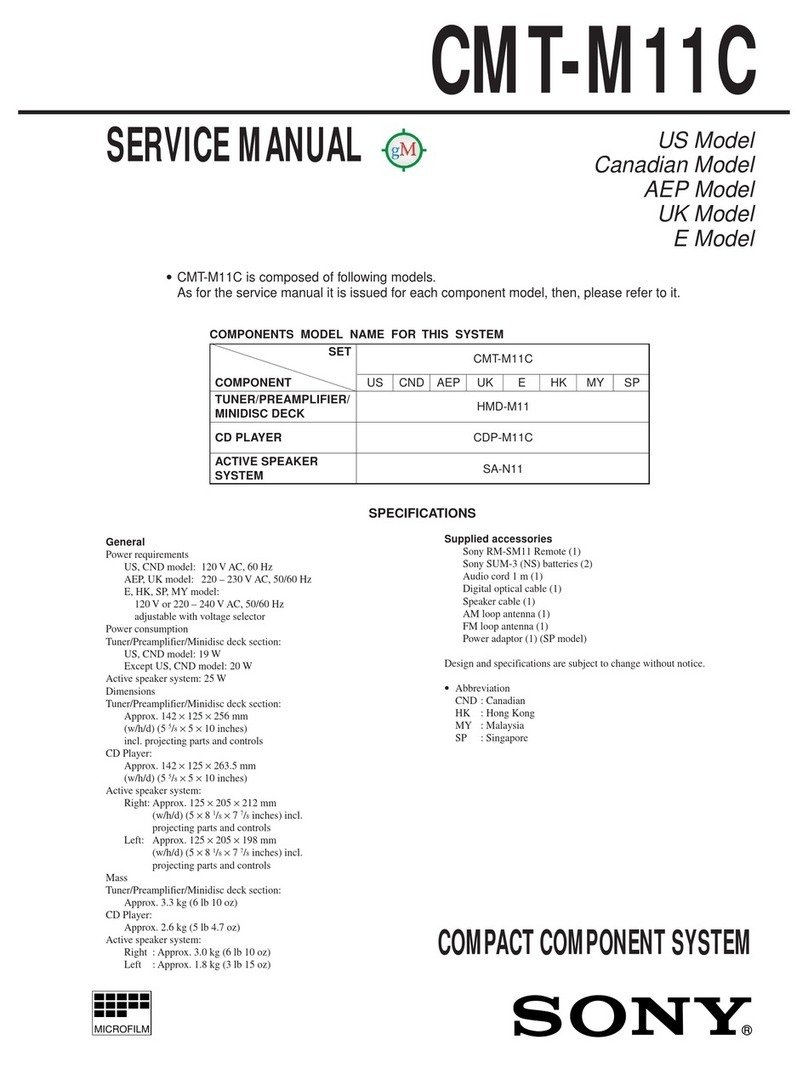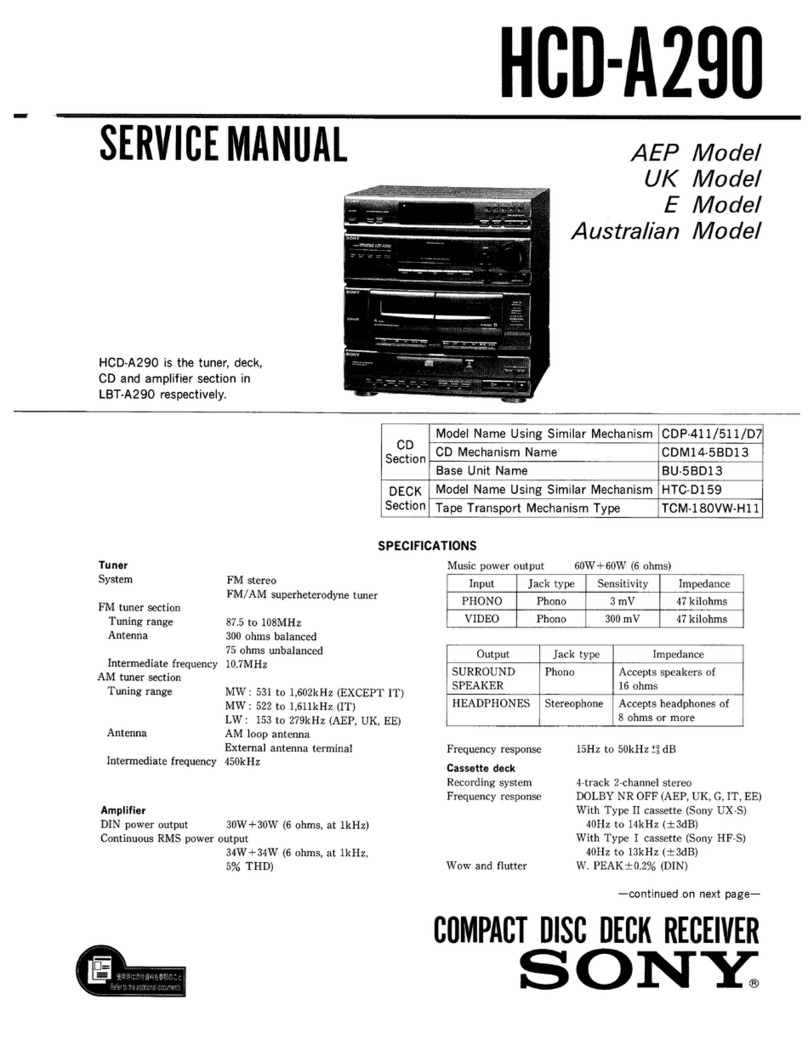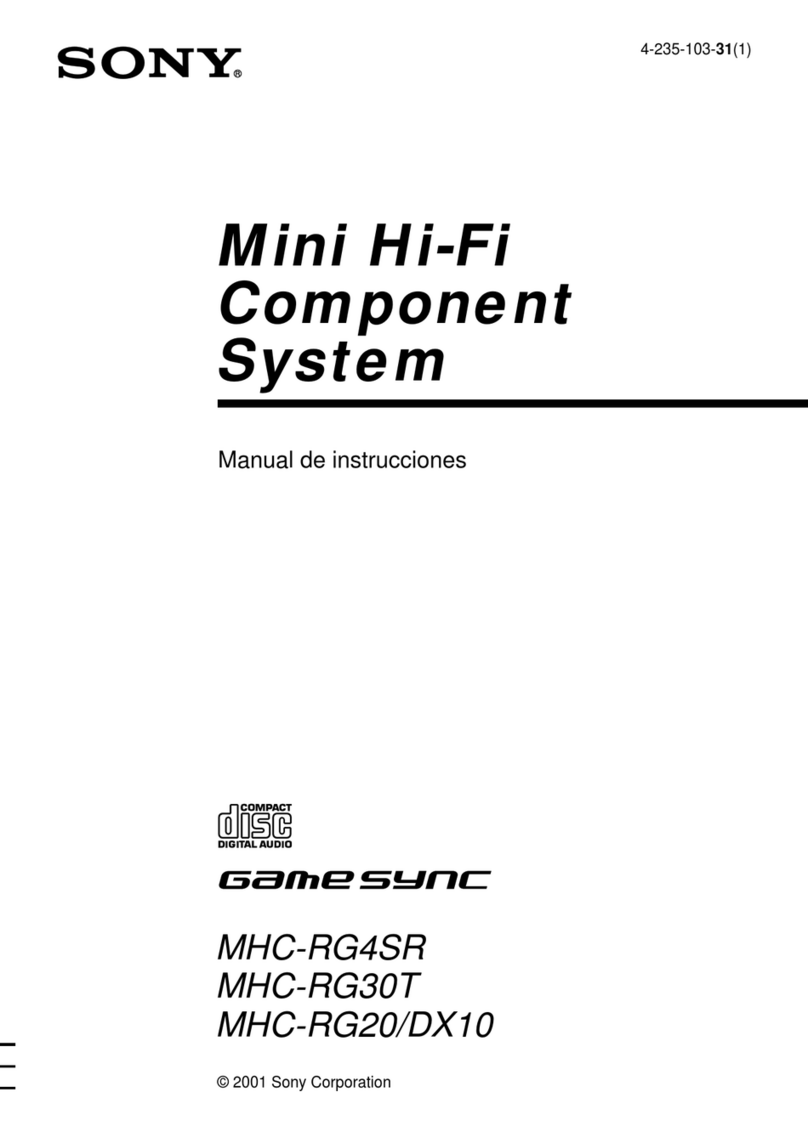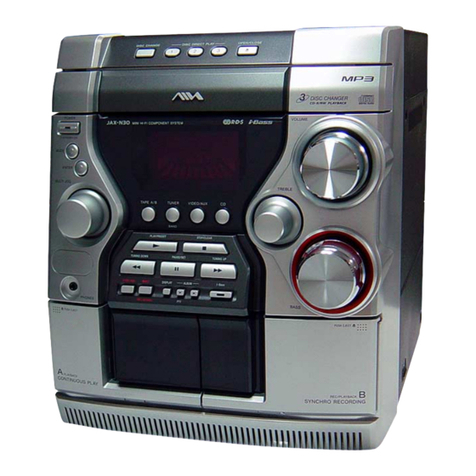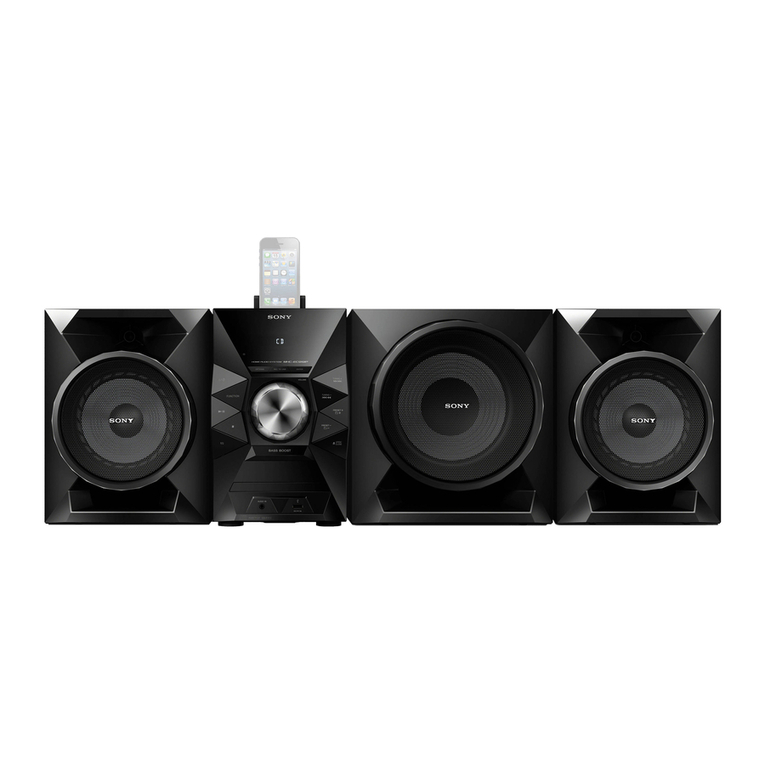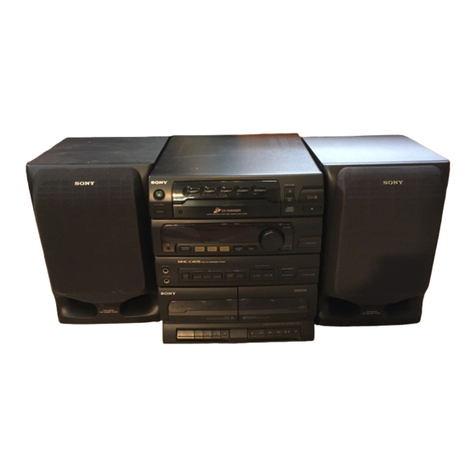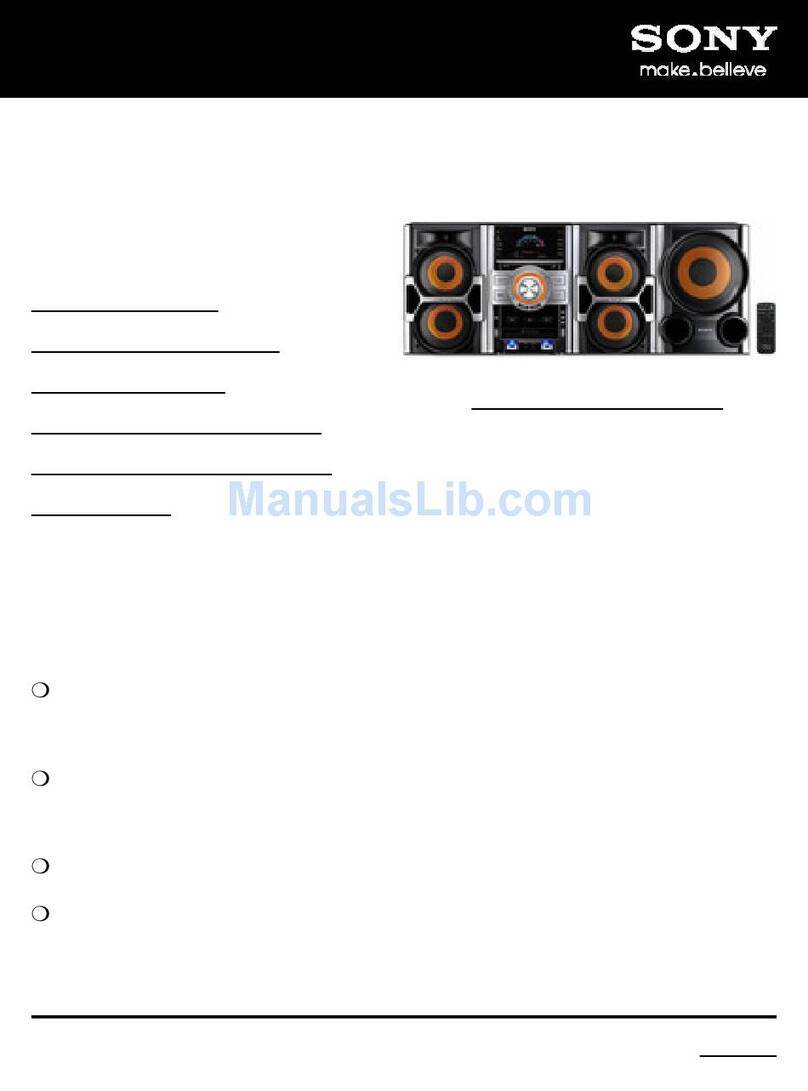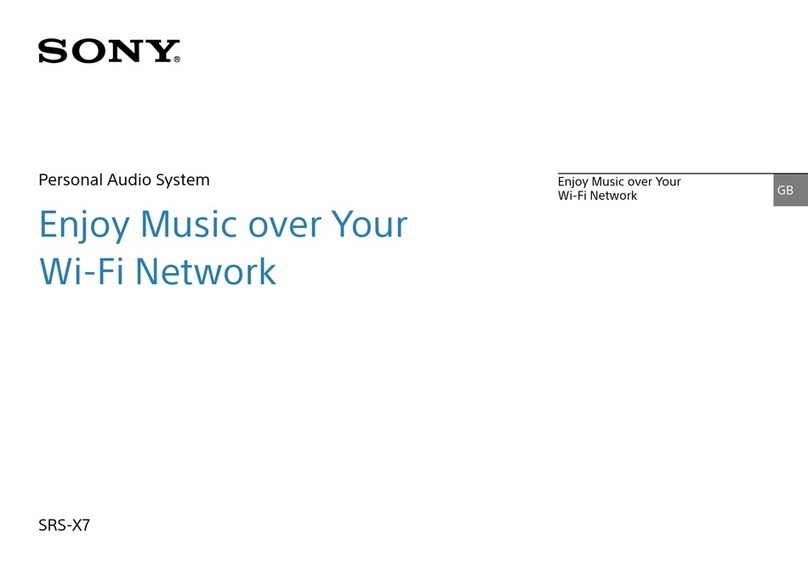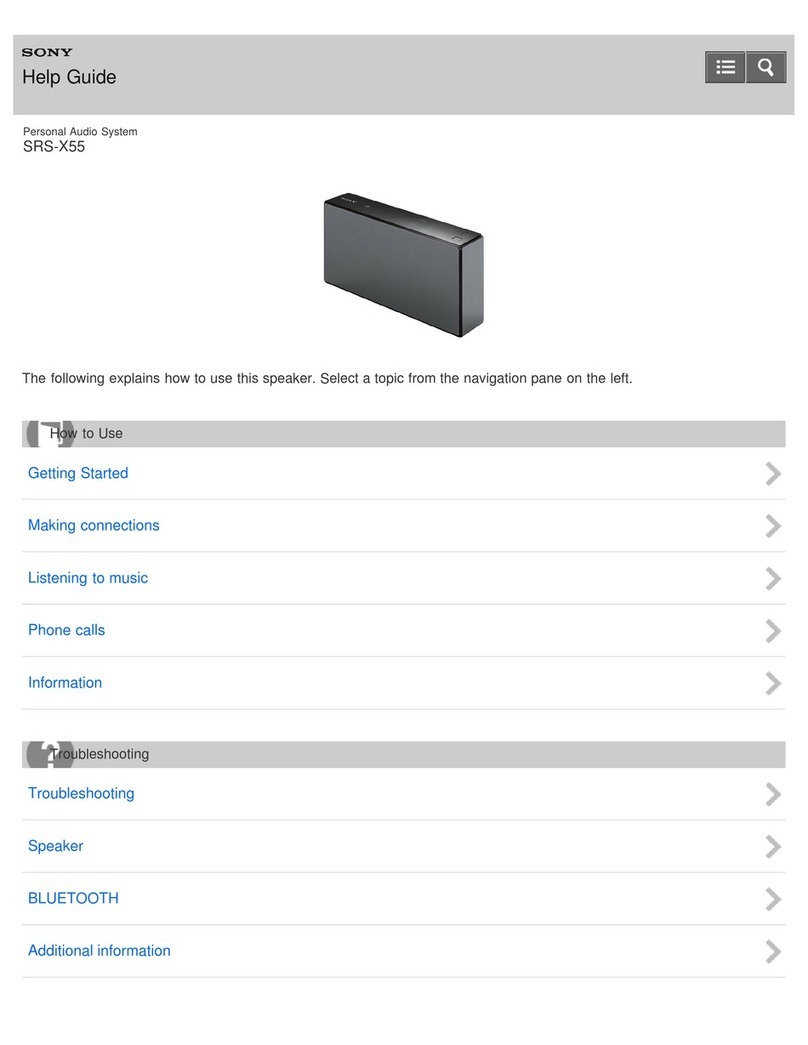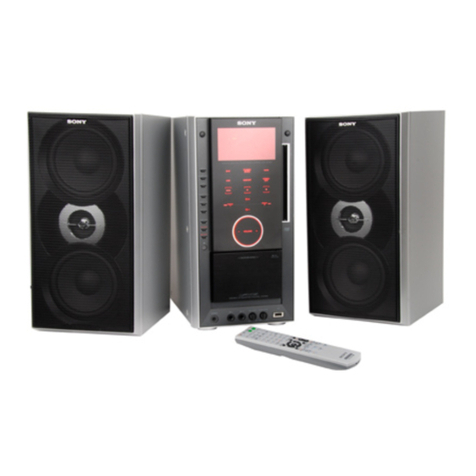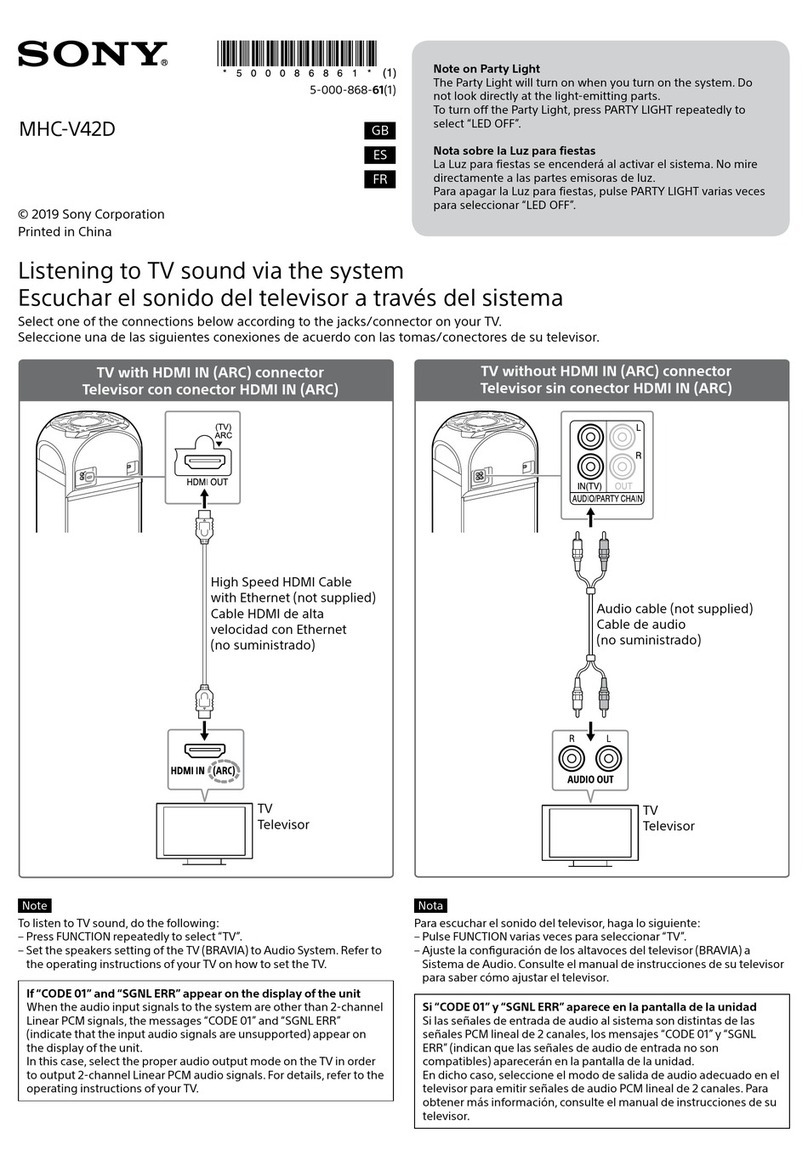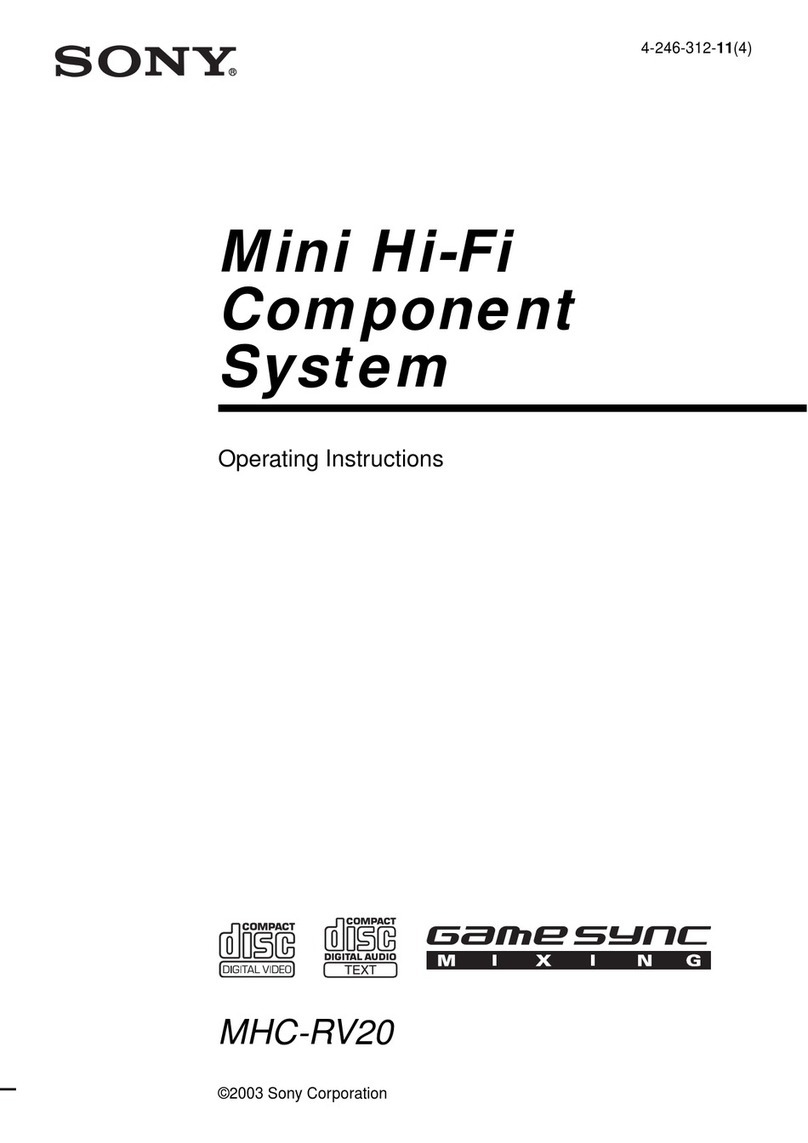
2
HCD-CP100/CP100K
CD player section
System Compact disc and digital
audio system
Laser Semiconductor laser
(λ= 780 nm)
Emission
duration: continuous
Wavelength 780 - 790 nm
Frequency response 2 Hz - 20 kHz (±0.5 dB)
Tape player section
Recording system 4-track 2-channel stereo
Frequency response 50 - 13,000 Hz (±3 dB),
using a Sony TYPE I
cassette
Wow and flutter ±0.15% W. Peak (IEC)
0.1% W. RMS (NAB)
±0.2% W. Peak (DIN)
Tuner section
FM stereo, FM/AM superheterodyne tuner
FM tuner section
Tuning range
North American model: 87.5 - 108.0 MHz
(100-kHz step)
Other models: 87.5 - 108.0 MHz
(50-kHz step)
Antenna FM wire antenna
Antenna terminals 75 ohm unbalanced
Intermediate frequency 10.7 MHz
AM tuner section
Tuning range
Pan-American model: 530 - 1,710 kHz
(with the tuning interval
set at 10 kHz)
531 - 1,710 kHz
(with the tuning interval
set at 9 kHz)
European model: 531 - 1,602 kHz
(with the tuning interval
set at 9 kHz)
Middle Eastern and Philippine models:
531 - 1,602 kHz
(with the tuning interval
set at 9 kHz)
Other models: 530 - 1,710 kHz
(with the tuning interval
set at 10 kHz)
531 - 1,602 kHz
(with the tuning interval
set at 9 kHz)
Antenna AM loop antenna, external
antenna terminal
Intermediate frequency 450 kHz
General
Power requirements
North American model: 120 V AC, 60 Hz
European model: 230 V AC, 50/60 Hz
Australian model: 220 - 240 V AC, 50/60 Hz
Mexican model: 120 V AC, 60 Hz
Other models: 110 - 120 V or 220 -
240 V AC , 50/60 Hz
Adjustable with voltage
selector
Power consumption
European model: See the nameplate
0.5 W (in the standby
mode)
Other models: See the nameplate
Dimensions (w/h/d) Approx. 190 ×252 ×
345 mm incl. projecting
parts and controls
Mass Approx. 5.6 kg
Design and specifications are subject to change
without notice.
TABLE OF CONTENTS
1. SERVICING NOTES ............................................... 4
2. GENERAL
Location of Controls ....................................................... 5
Setting the Time .............................................................. 6
3. DISASSEMBLY
3-1. Disassembly Flow ........................................................... 7
3-2. Cover (Upper) ................................................................. 8
3-3. CD Lid ............................................................................. 8
3-4. Front Panel Section ......................................................... 9
3-5. Tape Mechanism Deck.................................................... 9
3-6. CD Mechanism Deck (CDM55F-K6BD41A)................ 10
3-7. Base Unit (BU-K6BD41A)............................................. 10
3-8. Loading Board................................................................. 11
3-9. Cam (CDM55) ................................................................ 11
4. TEST MODE.............................................................. 12
5. ELECTRICAL ADJUSTMENTS
Deck Section ................................................................... 13
CD Section ...................................................................... 13
6. DIAGRAMS
6-1. Block Diagram – CD SERVO Section – ........................ 14
6-2. Block Diagram – MAIN Section – ................................. 15
6-3. Block Diagram
– DISPLAY/POWER SUPPLY Section – ...................... 16
6-4. Note for Printed Wiring Boards and
Schematic Diagrams ....................................................... 17
6-5. Printed Wiring Board – CD Board – .............................. 18
6-6. Schematic Diagram – CD Board – ................................. 19
6-7. Printed Wiring Board – TC Board – ............................... 20
6-8. Schematic Diagram – TC Board –.................................. 21
6-9. Schematic Diagram
– MAIN (1/2)/LOADING Board – ................................. 22
6-10. Schematic Diagram – MAIN Board (2/2) – ................... 23
6-11. Printed Wiring Board – MAIN Board – ......................... 24
6-12. Printed Wiring Boards
– SWITCH/TC SWITCH/PRISM Boards –................... 26
6-13. Schematic Diagram
– SWITCH/TC SWITCH/PRISM Boards –................... 27
6-14. IC Pin Function Description ........................................... 28
6-15. Printed Wiring Boards
– LCD/HEADPHONE Boards – .................................... 29
6-16. Schematic Diagram – LCD/HEADPHONE Boards – ... 29
6-17. Printed Wiring Board – POWER Board – ...................... 30
6-18. Schematic Diagram – POWER Board –......................... 31
7. EXPLODED VIEWS
7-1. Cover Section .................................................................. 35
7-2. Front Panel Section ......................................................... 36
7-3. Chassis Section ............................................................... 37
7-4. CD Mechanism Deck (CDM55F-K6BD41A)................ 38
7-5. Base Unit (BU-K6BD41A)............................................. 39
8. ELECTRICAL PARTS LIST ............................... 40
